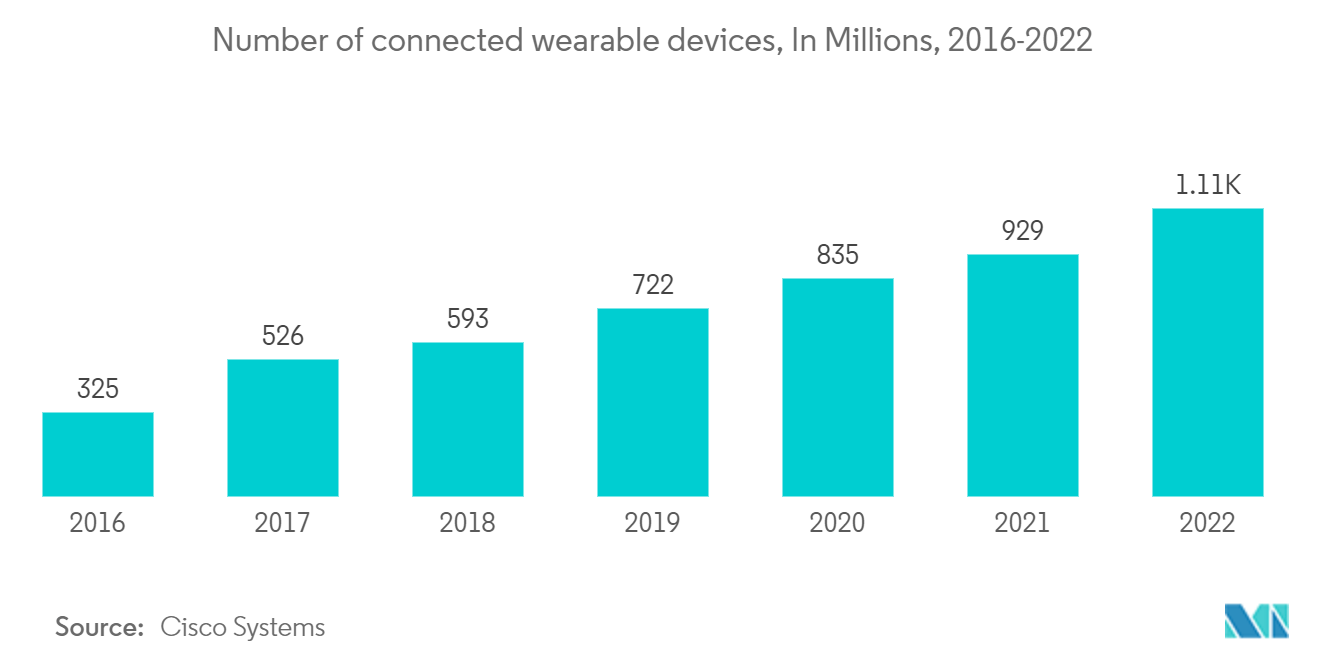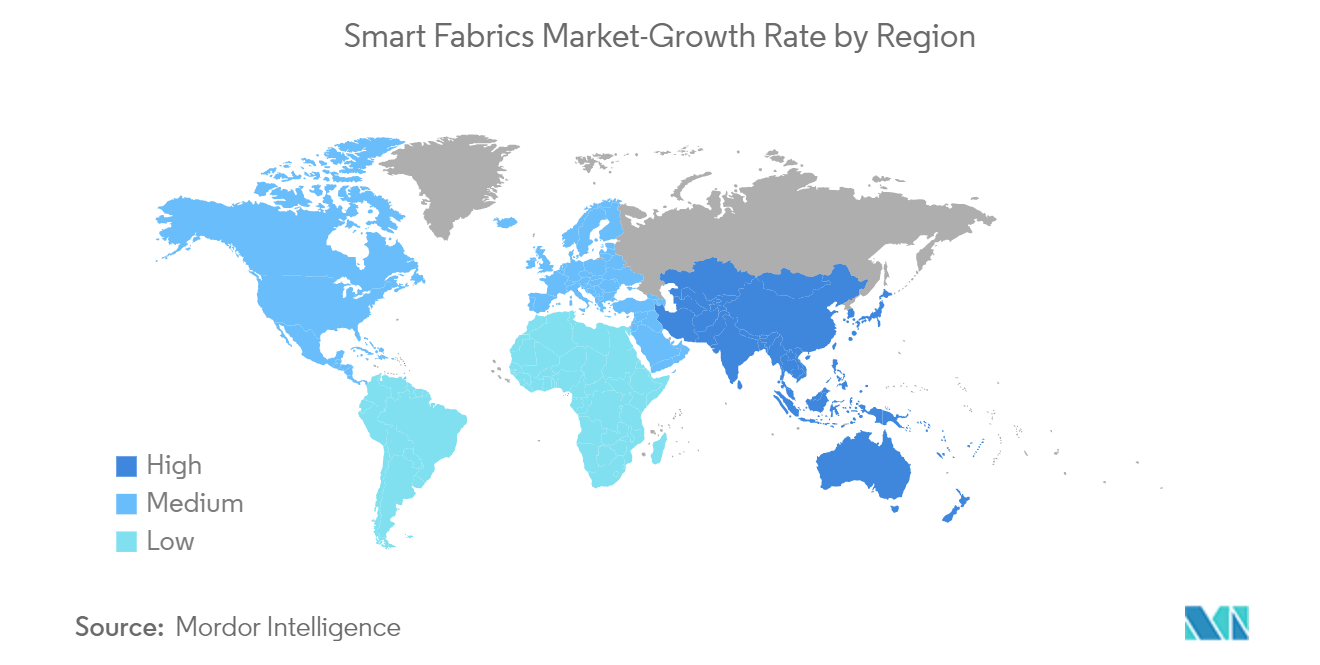Market Trends of Smart Fabrics Industry
Fashion and Entertainment Industry to Witness Significant Growth
- The fashion and entertainment industry uses smart fabrics to incorporate unique aesthetics into clothing. Appearance features, such as color, size, or shape of garments, can be altered using technology woven into fabrics. Smart fabrics in clothes enable the user to interact with their surroundings and communicate data via embedded sensors or conductive yarn through the clothes they wear with wearable devices.
- In the fashion industry, the market studied is driven by innovations of the designers coming up with new and aesthetically pleasing outfits integrated with a useful technical architecture capable of relaying information. Many brands, including Uniqlo to Lululemon, use smart fabrics to set their collections ahead of the pack.
- Many prominent brands such as Under Armour, Levi's, and Tommy Hilfiger, among others, along with smaller companies such as Sensora, Loomia, Hexoskin, CuteCircuit, are offering their smart clothing that are using smart fabrics to set their collections ahead of the others. For instance, CuteCircuit utilizes smart fabrics for its haute couture collections and special projects. CuteCircuit's 'Hug Shirt' allows the user to send electronic hugs through sensors within the garment.
- The French startup Spinali Design makes high-end beachwear with integrated ultraviolet light sensors that tell the wearer when it's time to apply sunscreen and distance trackers that tells the parents when the kids have wandered too close to the surf.
- Further, for the past few years, Google worked with Levi Straus on a future smart jean jacket under Project Jacquard, which would eventually lead to a jean jacket with smart fabric sleeves and built-in touch controls.

North America to Account for a Significant Market Share
- North America is anticipated to substantiate a prominent share in the smart fabrics market, with the United States region accounting for the major share. Connected wearable products are gaining significant trends and have been around in various forms, such as fitness bands, smartwatches, smart glasses, and among others.
- This increasing adoption of wearable electronics devices is anticipated to open new avenues for the smart fabrics market as they offer significant enhancements to human comfort, health, and well-being.
- Furthermore, the Canadian military has used full-fabric keyboards in its IAV Stryker units, developed to replace the bulky, traditional hardware. These are designed to be lighter, more comfortable to transport, and have fewer components to break.
- Moreover, the level of research for developing smart fabrics has taken a step ahead in the region. The region has been witnessing research and developments to create adaptive thermal clothing that could help control the microclimate around each individual. For instance, Kestrel Materials, an OtherLab spin-out company, commercializes thermally adaptive garment technology based on textile bimorph structure with strategically mismatched coefficients of thermal expansion.
- In July 2022, MIT researchers developed smart fabrics that adapt to the body to sense the wearer's position and actions using an innovative production process. The researchers were able to significantly increase the precision of pressure sensors woven into multilayered knit textiles known as 3DKnITS by integrating a particular kind of plastic yarn and applying thermoforming. This method was utilized to develop a "smart" shoe and mat, and a hardware and software system was then developed to collect and analyze data from the pressure sensors in real time. With an accuracy rate of roughly 95%, the machine-learning algorithm anticipated the movements and yoga positions that a person would make while standing on the smart textile mat.


